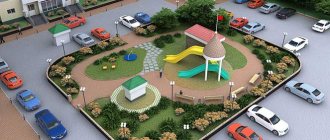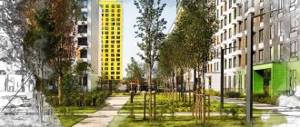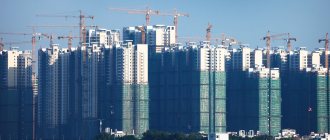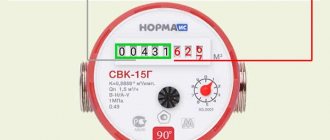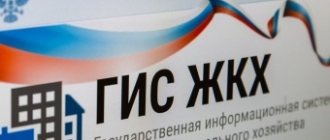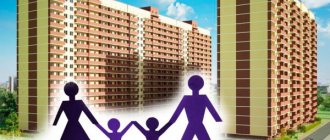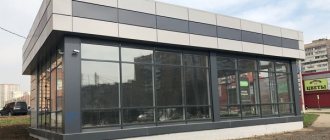General information about the program
The first serious attempt to turn the situation around in terms of improvement of Russian cities was the development in 2021 of the priority project “Formation of a comfortable urban environment.” The main principle of the project is that the state allocates money at the federal level, and in the regions and cities, residents decide for themselves
, what improvement projects to direct them to.
The implementation of the project began on November 17, 2021, and it is designed for 5 years - until 2022. To finance the project, 20 billion rubles are allocated from the federal budget each year, and another 7.5 billion will be allocated from regional budgets.
In practice, it is possible to use even large sums - in 2021, 25.6 billion rubles were spent on the project from the federal budget and 16.7 billion from regional budgets.
For 2021, instead of 20 billion, the federal budget will allocate twice as much for the project - 40 billion.
The project is financed in different proportions - for some constituent entities of the Russian Federation, the federal and regional budgets allocate the amounts equally, in others the project is paid for entirely with “federal” money.
The main features of the project are:
- 2/3 of the amount is allocated for the improvement of courtyard areas, and 1/3 of the amount for other public spaces (parks, squares, recreation areas);
- Only the residents themselves can decide where to send the money. To do this, in cities, local authorities should organize voting
for priority improvement projects; - the improvement program applies to cities and towns with a population of more than 1000 inhabitants. But it is possible to improve public spaces according to the project in rural areas, with certain restrictions;
- there is the possibility of co-financing the work from residents - for additional landscaping elements that are not included in the project.
The improvement project is being actively implemented in the country - about 19,000 Russian courtyards were renovated in 2021 alone.
What is included in landscaping the local area and who does it?
What is included in landscaping yards? In winter, this includes removing snow, removing ice, sprinkling paths with de-icing materials, throwing snow off the roof, knocking down icicles, etc. In the warm season, this includes sweeping the area, mowing lawns, digging in, cutting and pruning bushes, pruning old trees and planting new trees. Garbage collection and trash cans are cleaned year-round.
We recommend reading: How to prepare documents for an unscheduled special assessment
The improvement of the local area is subject to certain standards provided for by several legislative acts. To those previously indicated we will add the Housing Code of the Russian Federation, Decrees of the Government of the Russian Federation dated 04/03/2021 No. 290, dated 08/13/2021 No. 491, SanPiN 2.1.2.2645-10 and SanPiN 42-128-4690-88.
What kind of landscaping awaits the yard?
Through federal funding, only a certain “set” of improvements can be obtained within the program:
- repair (most often - asphalting) of internal roads and driveways. If the parking lot is part of the driveway, its arrangement will also be financed;
- repair and arrangement of sidewalks;
- installation of small forms - benches, lanterns and trash cans;
- repair of entrances (the part that belongs to the yard).
These elements of improvement are guaranteed at the federal level
. In other words, the contractor will not “forget” to pave the driveway or install and connect street lights.
However, yards usually need other landscaping elements. As a rule, residents do not have enough parking spaces, playgrounds and green spaces. These elements are financed differently everywhere, depending on local legislation.
Some regions and cities are asked to pay a certain part of the cost of additional improvements - from 1 to 20%. Money can be taken, for example, from the amounts collected by the management company for current repairs of the house. For example, in the Sverdlovsk region it is 5%, and in the Chelyabinsk region it is only 3%.
Other settlements fully pay for additional elements of improvement. In such a situation, everything needs to be coordinated with local authorities.
It is important that after February 9, 2021, co-financing from the owners cannot be less than 20% of the cost of performing work on additional landscaping elements. This only applies to projects that are agreed upon after this date.
The general procedure for participation in the project for apartment owners is established by local authorities. However, there are still general rules. For example, municipalities give priority to courtyards in the most “deplorable” condition – with broken driveways and a lack of other amenities.
When deciding whether or not to include a yard in the improvement program for the planning year, local authorities also take into account other criteria - the level of payment of residents for housing and communal services (if they do not pay, then they will not take care of the improvement object after repairs), as well as the date of construction of the house – in Russian realities, there are often cases when there were no repairs in the yard at all.
Finally, there is a list of criteria under which the administration will not include the yard in the program at all
landscaping for the year:
- among the houses that are adjacent to the yard, there are emergency ones - subject to demolition in the coming years;
- similarly – if there are adjacent new buildings that are under the developer’s guarantee – as a rule, the guarantee period is about 5 years;
- plans for the next year include repairing communications in the yard - there is no point in laying asphalt if in a few months it will be destroyed during repairs of the water supply system;
- The yard has already been repaired using budget funds (either the contractor did his job poorly, or the residents managed to ruin everything again).
Since there are quite a lot of conditions for participation in the yard improvement program, experts recommend asking the local administration whether the yard is eligible for landscaping. It is possible that for the planning year all the money under the program has already been distributed to other households, then you will have to wait for next year.
What is included in landscaping the local area?
- the asphalt coating layer should not be less than the established standard of 15 cm;
- It is recommended to use a fine-grained composition;
- 1 meter is the minimum width of asphalt laid around the house;
- mandatory laying of pavement on paths leading to the entrance and parking areas.
We recommend reading: Sample resume for cashier salesperson
The boundaries and general square footage of the local area are determined by the cadastral or technical passport of the property. According to Article 16 of the Housing Code, this territory belongs to all residents of the house on a shared basis. Its maintenance and care is carried out by the management company or HOA, as well as by the residents themselves and the contractor companies with whom the service agreement was concluded. They, for example, carry out repairs of the local area of the apartment building.
What needs to be done to improve the yard
Residents of most Russian apartment buildings (with the exception of those listed above) can organize the participation of their courtyard area in the project to create a comfortable urban environment.
To do this you need to go through a number of stages. These stages are regulated by the rules of the project, so there is no way to “bypass” them - in order to achieve your goal, you need to strictly follow them.
Stage 1
– decide that the yard needs improvement, but is still included in the current program. You can check this on the local administration website. There are often cases when other residents of the house have already done all the work, but were unable to convey this information to everyone.
Lists of courtyard areas that will be repaired this year are posted on the websites of municipal administrations. You should open the “Formation of a comfortable urban environment” section on the website; there should be information about plans for the current year.
In addition, on the administration’s website you can usually vote for public areas that will be landscaped - parks, squares, streets, etc.
Stage 2.
If the house is not found on the list for improvement, then you need
to create an initiative group
of residents of the house (and other houses that have a common yard). It is the initiative group that organizes all the work - convenes a meeting of residents, draws up a work plan, communicates with the administration.
The easiest way to resolve the issue is with an initiative group for residents of houses in which an HOA is organized; then the chairman, accountant and other participants of the partnership can be included in the group.
The work of including the yard in the landscaping plan will require time, so those who work from morning to night without days off are unlikely to be able to help.
Stage 3
– development of a landscaping scheme. Although this seems somewhat complicated, it is actually quite simple. You need to decide what the yard is missing and draw up a diagram.
It is not necessary to have drawing skills; the diagram can be drawn directly on the yard map
, taken from the website of satellite images (Yandex, Google, Bing and other services). The diagram should reflect:
- how the houses are located relative to the yard;
- space that will be allocated for internal driveways, sidewalks and parking lots;
- location of improvement facilities - lanterns, benches, trash cans, children's playground;
- landscaping scheme - where to place trees, lawns, flowers;
- location of other objects.
Everything must be measured first and the dimensions indicated on the diagram. You need to specify colors, materials and other parameters. For example, sidewalks can be made of tiles, or they can be rolled into asphalt - each option has supporters and opponents.
Stage 4
– holding a general meeting of residents. You need to collect the residents of the houses to which the house belongs. At a meeting of residents, the improvement plan is agreed upon, the amount of co-financing is approved (if it is provided for by local regulations), and the initiative group agrees on collecting signatures.
This stage is quite difficult - not all residents will agree with the proposed project, and also with the fact that landscaping work will take place in the yard for several months. Motorists will be opposed to prohibiting parking on the lawn. There is also a separate category of residents who do not agree with any initiatives at all.
To approve the improvement plan, it is necessary to ensure that 2/3 of the residents vote for the participation of the yard
in a programme. The residents' decision is documented in the appropriate protocol. The protocol can be drawn up using templates that are offered for download on the local administration website. The minutes indicate the address of the house, the chairman of the meeting, the improvement plan, co-financing of the work, as well as the person responsible for the project.
For those who did not attend the meeting, there is a door-to-door vote for participation in the project. The initiators visit all apartments and ask to fill out a ballot (the template should also be on the administration website).
In the ballot you need to indicate your passport information, answer the questions of the meeting and put your signature. Only the owner of the apartment can do this.
Stage 5
– submitting an application to the local administration. The application template should also be on the administration website. All documents available at this time are attached to the application:
- improvement plan (scheme drawn up by the initiative group);
- a copy of the minutes of the general meeting of residents;
- ballots filled out during door-to-door voting.
Next, the municipal administration creates a special commission - it reviews applications and selects which courtyards will be repaired in the planning year. If the city has a small budget for improvement, but there are many requests, then the courtyards that most need repair will be included in the plan, and the rest will be transferred to subsequent years.
If the application is accepted, the administration staff will contact the chairman of the initiative group and inform him of the decision.
Stage 6
– approval of the final design project. Unlike a landscaping scheme, a design project is carried out at a more professional level. It is a detailed landscaping scheme with all the details.
The one chosen to be responsible for the project will have to coordinate the design project with the administration. It is necessary to ensure that important elements such as benches or a playground do not “disappear” from it.
Stage 7
– directly carrying out landscaping work.
Here, the person responsible for the project must monitor the work of the contractor. Any deviations from the approved project
must be immediately reported to the administration.
After completion of the work, a representative of the residents accepts the completed work as part of a group of administration employees. If the work is completed with violations, then the delivery certificate is not signed until they are corrected.
Stage 8 –
ensure the safety of amenities. The program will not allocate money twice for the same yard. Most likely, they will not be allocated for a decade and under other programs. Therefore, residents must preserve what they have received - avoid cases of vandalism in relation to the yard, sometimes go to clean-up days and do not throw garbage past the trash can.
Issues of improvement of the local area of an apartment building
After clarifying the boundaries of the local area and registering it with the cadastral register, ownership of it is automatically assigned to the apartment owners. However, this does not mean that it is possible to sell a share of the land plot - the law does not allow it to be alienated separately from housing.
- cleaning of common areas and underground parking lots (if any);
- installation of containers for food and household waste;
- removal of garbage and snow, drainage of melt water;
- landscaping of the territory, including the installation of lawns, planting and caring for flowers, cleaning up mown grass, foliage, etc.;
- production, construction and repair of playgrounds and recreation areas;
- tiling, painting, cleaning fences, benches, etc.;
- ensuring the safety of residents (for example, removing icicles, sprinkling sand on footpaths in winter, etc.).
We recommend reading: How to get land for a large family in Krasnodar
Responsibility for violating the rules
Residents are responsible for landscaping the area, and they are required to pay up-to-date costs for cleaning and repairs of structures. If the rules are not followed, then a fine is imposed , and the perpetrators are brought to administrative responsibility.
If the management company was engaged in the arrangement of the courtyard area and its actions caused damage to the building and the area around it, then the residents have the right to demand compensation from the culprit. If the requirements are not met, the state, through the court, imposes penalties on it.
The action of the state program “Our Yard” in Penza is described in the following video:
Definition of concepts
If we turn to SNiP, we learn that the local area is determined by a plot of land that is owned by an apartment building.
Children's playgrounds, parking lots, entrances for special equipment, drying areas, garages, which are located within the boundaries of the house, are the common property of all residents.
Already in Soviet times, multi-apartment buildings were put into operation with an existing plot of land, which could be privatized free of charge by all people living in the building. This was considered common property.
The area of the site is determined by the developer when planning the construction of the building - this is stipulated in the law on urban planning. The cost of land is divided by the number of apartments in the building and is included in the price of the premises.
We can conclude: the adjacent territory of an apartment building is the property of all residents, and its arrangement is carried out at the expense of the apartment owners.
